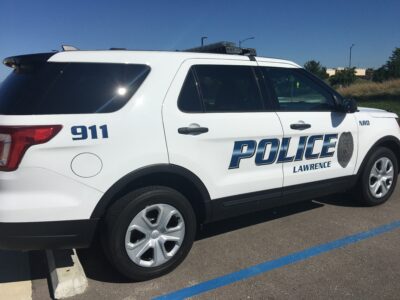False alarms waste precious time
Emergency personnel respond to hundreds of malicious or mistaken fire calls every year
Hundreds of times every year, Lawrence firefighters scramble onto their trucks and roar from their stations to respond to fires.
And hundreds of times every year, they are wasting their time because a call turns out to be a false alarm.
Last year it happened 748 times. Through Saturday, there had been 371 false alarms already this year.
“It obviously takes up time that you could be using to do something else or it causes a problem if you get one while you are trying to deal with another emergency,” Fire & Medical Deputy Chief Mark Bradford said of false alarms.
Still, Lawrence-Douglas County Fire & Medical officials said the benefit of fire alarms far outweighed the hassle of dealing with false warnings.
“You do have accidental alarms, but on the other hand, we have tremendous notification of emergencies,” Bradford said.
Troublesome though they are, false alarms actually have been decreasing during the past three years. There were 854 false alarms in 2000 and 837 in 2001.
There are 18 categories of false alarms, Bradford said. Some of them are intentional, such as someone pulling an alarm lever in the building just for thrills, or calling in a nonexistent fire. Others are accidental, such as a malfunctioning alarm or smoke detector.
The alarm statistics are not broken down to show what businesses or entities have the most false alarms. Some of those false alarms, however, occur at Kansas University residence halls, which opened again Sunday for the fall semester. When those alarms go off the entire building is evacuated, no matter what time of night.
Fire officials meet every year with KU representatives to discuss safety measures and response policies, Bradford said.

Liz Villines, a Kansas University junior, points to the cover over a fire alarm in McCollum Hall. The clear plastic case must be removed before the alarm's lever can be pulled. When the case is removed, an alarm sounds in the immediate area to attract attention to the person pulling the alarm, in hopes of dissuading malicious false alarms from the residence hall.
“That helps reduce a lot of the problems,” he said.
At the residence halls, KU officials inform students of the problems that false alarms cause.
“We try to address that at the beginning of the year and let them know the kinds of challenges that are faced in evacuating a building,” said Diana Robertson, associate director of student housing.
McCollum Hall is the only dormitory that has put covers on its fire alarms. A clear plastic case must be removed to pull the alarm lever. When that case is removed, it sounds another alarm that can be heard only in the immediate area before the main alarm goes off.
The purpose is to attract the attention of anyone nearby who might see a false-alarm culprit before they get away.
“That seems to work pretty well,” Robertson said.
Though it is rare to catch such a culprit, causing or intentionally making a false fire report can get someone sent before a judge in Lawrence Municipal Court. If found guilty, a fine from $25 to $500 can be levied and a jail sentence of as much as a year could be ordered.
KU officials can also take disciplinary action against a student over a false alarm. The student could be told to move out of the dorm, Robertson said, as occurred in two instances two years ago.
Some cities fine businesses or residences if they have too many false alarms during a year. But Fire & Medical isn’t convinced that is the best way to handle the problem here, Bradford said.
“If you start fining people, then those places that aren’t required to have alarms will just take them out,” he said.
City ordinances require alarms, sprinklers or smoke detectors in certain types of manufacturing businesses, hospitals and schools, to mention a few places. Private residences are not required to have them.






